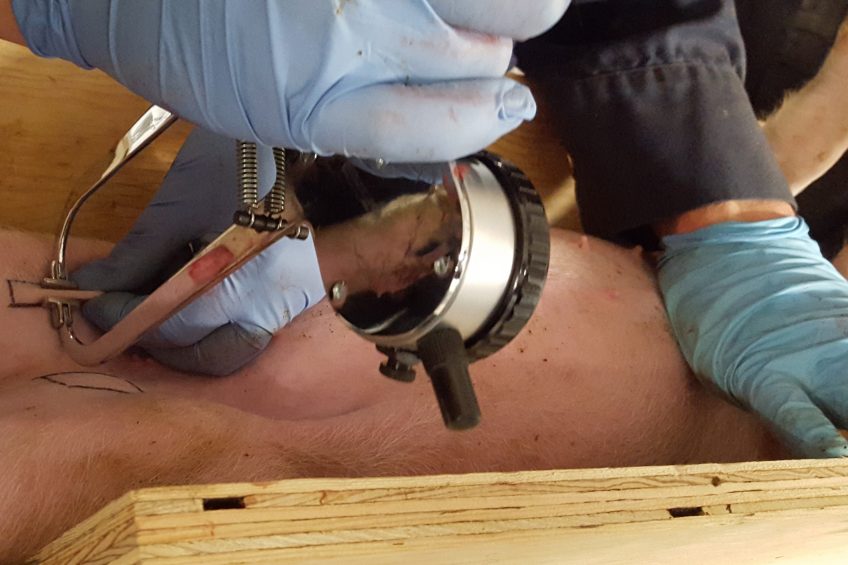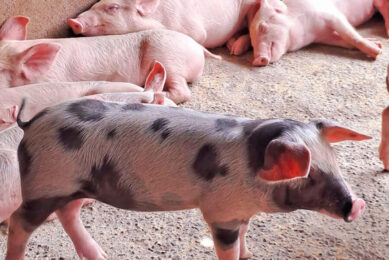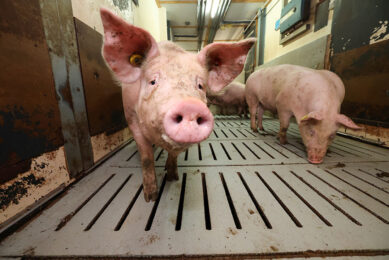Helping pigs to be better prepared for disease pressure

Using breeding and genetics to prepare pigs better for disease challenges that might be around – it may sound like science fiction, but in Canada, this is far from a myth. First results show that with the right genetic approach, pigs can be better prepared against e.g. A. pleuropneumoniae or M. hyorhinis.
The management of livestock disease is among agriculture’s most difficult challenges. In addition to adding costs, diseases can also contribute to negative consumer perceptions of animal products in terms of factors like human health risks associated with food safety and antibiotic resistance. It’s therefore critical that new, effective and positive methods of disease control diseases are developed.
Although it may still sound like something from science fiction, genomics is now being used in powerful ways to control diseases in livestock. Thanks to research pioneered in Canada in dairy cattle, identification of pigs with higher immune responses – pigs therefore less likely to suffer disease to the extent other pigs do, or not at all – is now a reality. With HIR (High Immune Response) technology, pig breeders will soon be able to breed animals on a commercial scale with stronger immune systems that show increased tolerance towards, or resistance to, multiple disease threats.
It is also expected that HIR technology will permit swine producers to better manage the nutritional content of pig feed so that the need for antibiotic use in pig production is reduced, pigs stay healthier, grow more efficiently and have more successful litters.
Origin and current status
HIR technology was invented several years ago by Dr Bruce Wilkie, Dr Bonnie Mallard and Dr Brian Kennedy at the University of Guelph in Guelph, ON, Canada. It was first tested in pigs and later tested and applied in dairy cattle, and has recently been implemented globally by Canada’s largest dairy genetics company (Semex Alliance) under the trade-name Immunity+.
HIR swine research in Canada is currently part of what is known as the ‘Genome Canada’ Large Scale Applied Research Project (LSARP)*, also see box. Project scientists foresee that if HIR outcomes are favourable, they will quickly be adopted by a large proportion of the Canadian swine sector.
“Our objective is to increase the international competitiveness of the Canada’s pork industry,” explains team member Dr Julie Schmied, a postdoctoral fellow in the Department of Pathobiology at the University of Guelph’s Ontario Veterinary College.
She adds, “With swine, within several years of the project ending, we expect that uptake of the tech across Canada will increase the rate of genetic improvement and annual productivity by a significant amount. In dairy cattle, cows identified as HIR yield an additional CAN$ 125 (US$ 98) or more per cow per year, in comparison to average immune responders.”
In terms of industry uptake of HIR technology in swine, one way it may be achieved would be through PigGen Canada and its partners under licenced use from the University of Guelph.
How HIR works
HIR technology allows the identification of animals with both high antibody-mediated (AMIR) and high cell-mediated (CMIR) immune responses. AMIR is critical to control pathogens that attack from outside an animal’s cells, such as bacteria, while CMIR is involved in controlling pathogens like viruses, which do their damage once inside an animal cell.
“With cattle and swine, use of the HIR technology is similar,” Schmied notes. “We determine AMIR through measuring antigen-specific antibody activity [in a blood test], and CMIR through measuring a delayed change in skin fold thickness after intradermal injection of an antigen.”

In terms of what is known about HIR and livestock disease, let’s look at dairy cattle research results. Long-term research at the University of Guelph has found that breeding for enhanced overall immune response (both AMIR and CMIR) using the HIR method decreases the incidence and severity of infectious and metabolic diseases such as mastitis, metritis, pneumonia and retained placenta. Previous studies have also shown that IR traits have a heritability estimate that is similar for cattle and for pigs, in the range of 25%.
“In past studies, when Yorkshire pigs were selectively bred using the HIR method, high responder pigs had improved AMIR when ‘challenged’ with vaccination and pathogens compared to the control group and low responders,” adds Schmied.
“Additionally, when challenged with a commercial Actinobacillus pleuropneumoniae (App) vaccine, HIR pigs had greater serum antibody activity than other pigs, and fewer pigs that showed no response to the vaccine.” In addition, when challenged with the bacteria Mycoplasma hyorhinis, HIR pigs displayed less severe clinical signs of infection compared to low responders, with the exception of arthritis (an inflammatory response to the introduced pathogen).
Application of genomics to improve disease resilience
The Large Scale Applied Research Project (LSARP), called ‘Application of genomics to improve disease resilience and sustainability on pork production’, is led by Dr Michael Dyck at the University of Alberta, Dr John Harding at the University of Saskatchewan and Dr Bob Kemp at PigGen Canada (a group of the main pig breeding companies in Canada). It is supported by organisations Genome Alberta and Genome Prairie, with the Ontario Genomics Institute providing funding specifically for HIR development for swine.
Higher average daily weight gain
Another past trial also showed that HIR pigs achieved higher average daily weight gain and reached 100kg about ten to 12 days sooner than low responders. “We are currently studying how high immune response correlates with production aspects such as average daily weight gain, but we have a study on Holstein cattle in Australia that backs up the pig results,” says Schmied.
“It showed that heifers with the highest antibody response grew faster than low responders. It’s not surprising that healthy animals grow faster, as sickness is generally associated with lack of appetite and lethargy.”
At this time, the immune responses of about 1,500 pigs have been catalogued using the HIR method and DNA samples have been collected. Data analysis is underway, but Schmied says she and her colleagues have not yet completed an evaluation of how immune response potentially correlates to specific genes.
“This is one of the goals of the current Genome Canada project, in which we aim to both phenotype (gain physical immune response data) and genotype (do genetic analysis) approximately 3,600 F1 barrows,” she notes. “Preliminary analysis of 230 phenotyped pigs suggests that pigs with higher AMIR have better survivorship against disease.”
The team is also working closely with Semex Alliance to phenotype about 5,000 commercial dairy cattle across Canada to develop a genomic test for immune response. “We have positive preliminary results,” says Schmied, “in that the test is working as expected.”
Join 18,000+ subscribers
Subscribe to our newsletter to stay updated about all the need-to-know content in the pigsector, three times a week. Beheer
Beheer










 WP Admin
WP Admin  Bewerk bericht
Bewerk bericht